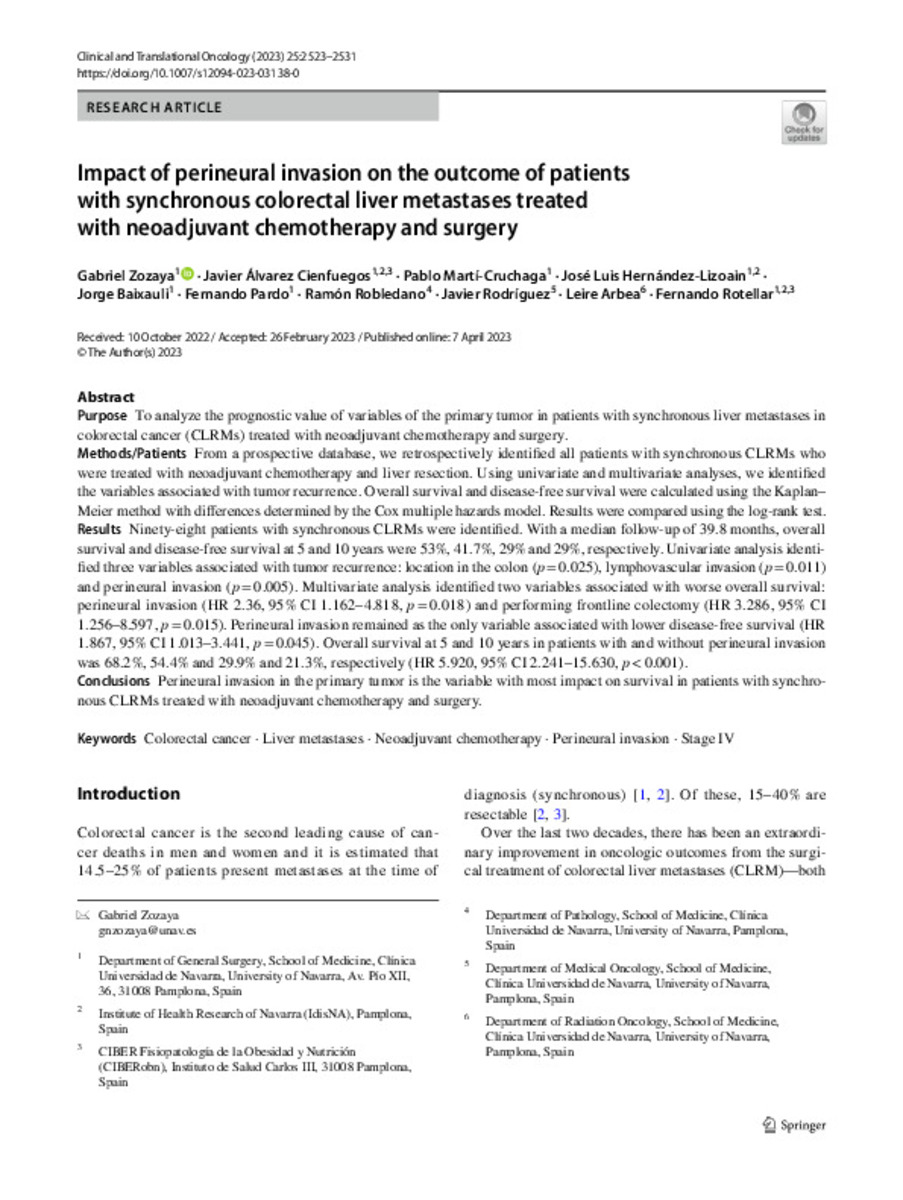Impact of perineural invasion on the outcome of patients with synchronous colorectal liver metastases treated with neoadjuvant chemotherapy and surgery
Keywords:
Colorectal cancer
Liver metastases
Neoadjuvant chemotherapy
Perineural invasion
Stage IV
Materias Investigacion::Ciencias de la Salud::Cirugía
Note:
This article is licensed under a Creative Commons Attribution 4.0 International License
Citation:
Zozaya, G. (Gabriel); Álvarez-Cienfuegos, J. (Javier); Marti-Cruchaga, P. (Pablo); et al. "Impact of perineural invasion on the outcome of patients with synchronous colorectal liver metastases treated with neoadjuvant chemotherapy and surgery". Clinical and Translational Oncology. 25, 2023, 2523 - 2531
Statistics and impact
0 citas en

0 citas en

Items in Dadun are protected by copyright, with all rights reserved, unless otherwise indicated.







